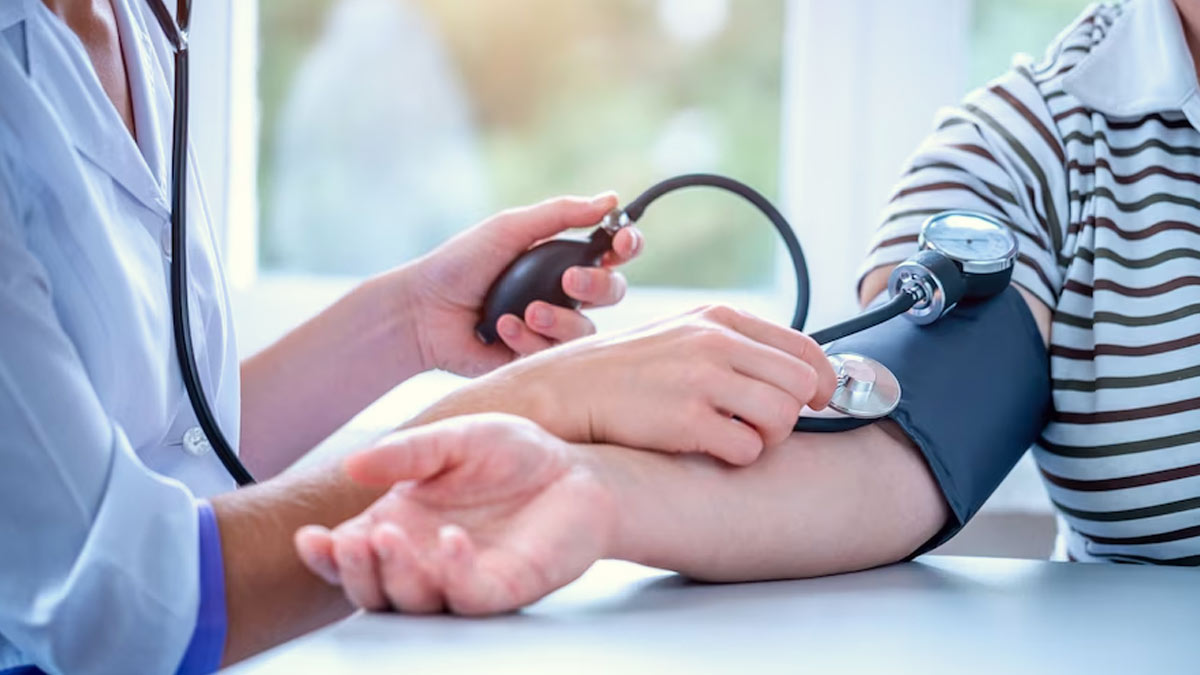
Blood pressure is the force of blood on the artery walls. When the force is greater than the normal range, which is 130/80 mm Hg or higher, it is called high blood pressure. One of the ways high blood pressure or hypertension impacts our body is by straining the heart and the blood vessels and pushing it to work harder. This pressure gradually damages the tissues in the arteries, which can lead to other conditions ranging from arrhythmia to heart attack and stroke. There is no telling who can and cannot develop high blood pressure, which is why regular health check-ups including blood pressure measurements are crucial.
Table of Content:-
Speaking with the OnlyMyHealth team, Dr Mukesh Mehra, Director - Internal Medicine, Max Super Speciality Hospital, Patparganj, shares how often one should check for elevated blood pressure and ways to measure it accurately.
Also Read: High Blood Pressure In Pregnant Women: Warning Signs To Note
Primary Versus Secondary Hypertension

High blood pressure can be categorised into two parts namely primary and secondary hypertension. “While primary hypertension develops gradually over time without an identifiable cause, secondary hypertension is caused by an underlying condition and may lead to higher blood pressure levels,” said Dr Mehra. The former does not have a known cause but certain risk factors can increase your chances of developing the condition. These include:
- Smoking
- Family history
- An inactive lifestyle
- Being overweight or obese
- A poor diet
- Stress
Secondary hypertension can be caused by various underlying conditions that can cause secondary hypertension. These include:
- Kidney disease
- Adrenal disease
- Hyperparathyroidism
- Thyroid disease
- Tightening of the aorta
- Obstructive sleep apnoea
How Often Should You Check Your Blood Pressure?

High blood pressure is often termed as a ‘silent killer’. This is because it usually presents no symptoms. Hence, it is important to check your blood pressure regularly.
Dr Mehra said, “Regular monitoring is crucial to manage this common condition effectively and prevent complications. Blood pressure, measured in millimetres of mercury (mm Hg), is categorised into different levels. Ideal blood pressure is considered normal at 120/80 mm Hg or lower.”
For adults, the doctor recommended a blood pressure check-up at least every two years starting at age 18. Individuals aged 40 or older, or those between 18 and 39 with a high risk of high blood pressure, should consider getting a blood pressure check annually. More frequent readings are advisable for those with hypertension or other risk factors for heart disease.
Also Read: Obstructive Sleep Apnoea: How To Reduce Risk For Better Heart Health
Risk factors for high blood pressure include:
- Age
- Race (with higher prevalence among Black individuals)
- Family history
- Obesity
- Lack of exercise
- Tobacco use
- Excessive salt intake
- Alcohol consumption
- Stress
- Certain chronic conditions like kidney disease and diabetes
Children aged three and older should have their blood pressure measured as part of their yearly checkups, advised the doctor. “The procedure involves wearing a cuff on the bare arm while sitting upright with back support, feet flat on the floor, and the arm resting at heart level. After relaxing for approximately five minutes, the measurement can be taken,” he added.
How To Accurately Check Your Blood Pressure Reading?

Here are certain steps to take while taking a blood pressure measurement at home:
- Place the cuff on your bare arm, sit upright with back support and feet flat on the floor, and position your arm at heart level.
- Ensure that the bottom of the cuff aligns with the bend of your elbow.
- Take a few minutes to relax before starting the measurement.
“By adhering to these guidelines, you can obtain more reliable blood pressure readings, empowering you to monitor your health effects from the comfort of your home,” said Dr Mehra.
Conclusion
Consistent monitoring of blood pressure is essential for individuals with hypertension. Going for regular check-ups and adopting a healthy lifestyle can effectively help manage blood pressure levels and reduce the risk of associated complications.
Also watch this video
How we keep this article up to date:
We work with experts and keep a close eye on the latest in health and wellness. Whenever there is a new research or helpful information, we update our articles with accurate and useful advice.
Current Version
